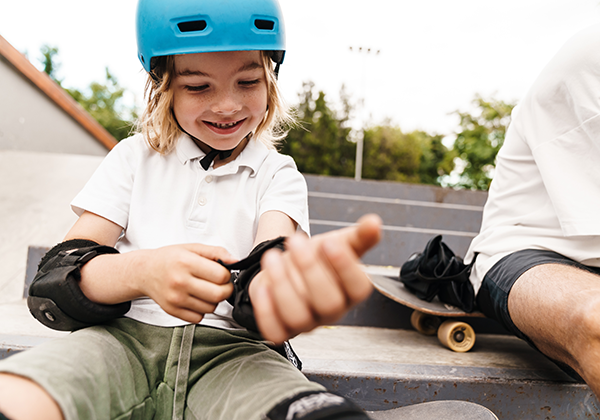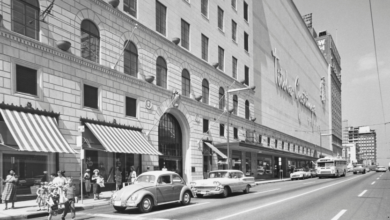Skateboarding and Scooter Uniforms: A Fusion of Style and Safety

Skateboarding and scootering have grown beyond simple hobbies into full-blown cultures. Both sports are celebrated for their freedom of expression, athleticism, and sense of community. But as much as they focus on tricks, speed, and stunts, they also require attention to safety and style. This is where the concept of uniforms, or more broadly, the attire for these sports, comes into play. Skateboarding and scooter uniforms are about striking a balance between comfort, style, and safety, catering to both amateurs and professionals.
The Rise of Skateboarding and Scootering Culture
Both skateboarding and scootering started as street sports, with enthusiasts pushing boundaries on ramps, in parks, and even on city streets. Skateboarding, which took off in the 1970s, has always been associated with rebellion, counterculture, and creativity. Over the years, scootering has followed in its footsteps, becoming increasingly popular, especially among younger riders. Today, both sports have massive communities worldwide, from casual riders to pro-level athletes.
Skaters and scooter riders are united by their love for movement, adrenaline, and, most importantly, self-expression. The clothing associated with these sports has evolved from basic t-shirts and jeans to more functional and stylish apparel. However, with the growing popularity of competitions and the emphasis on safety, the need for specialized uniforms has gained momentum.
What Constitutes a Skateboarding or Scooter Uniform?
Contrary to the traditional sense of uniforms, where everyone wears identical outfits, skateboarding and scooter uniforms are less about conformity and more about personal expression while incorporating essential safety features. Here’s what typically makes up the outfit:
- Helmets – Perhaps the most crucial piece of equipment, helmets protect against head injuries. For both skaters and scooter riders, wearing a helmet is not just smart—it’s essential, especially when performing tricks or riding at high speeds. Many competitions now require helmets, making them an integral part of the “uniform.”
- Pads – Knee pads, elbow pads, and wrist guards are equally important in protecting skaters and riders from common injuries. These pieces of gear might not scream “fashion,” but in skateboarding and scootering, they are crucial to a rider’s uniform. Most modern pads are designed with sleekness in mind, allowing for protection without hindering movement or style.
- Shoes – A good pair of skate shoes or scooter-specific shoes is fundamental. These shoes are designed to be durable, provide grip, and withstand the abrasiveness of the board or scooter deck. Skate shoes often feature reinforced toes and padded soles, allowing riders to perform tricks without discomfort or damage to their feet.
- Apparel – Skateboarding and scootering attire generally includes loose-fitting clothing to allow for movement, such as t-shirts, hoodies, and cargo pants. Many brands create apparel specifically designed to be comfortable, durable, and stylish. Riders tend to layer up, especially in cooler weather, while also keeping functionality in mind.
- Protection and Style in One – Increasingly, companies are developing uniforms that integrate both safety and fashion. Some riders may opt for lightweight jackets with built-in padding or reinforced seams that not only protect against falls but also look great. This fusion of protection and style is becoming more prevalent as brands recognize the dual need of athletes to stay safe while looking cool.
The Evolution of Skateboarding Apparel
In the early days of skateboarding, riders wore whatever they had on—usually jeans and sneakers. However, as the sport became more mainstream, major brands started paying attention. Companies like Vans, DC Shoes, and Element created clothing lines specifically for skaters, focusing on durability and comfort.
Over time, skateboard apparel transformed into a fashion statement. Baggy jeans, oversized t-shirts, and flat-brimmed caps became the go-to look in the 90s, symbolizing the laid-back, anti-establishment vibe that skateboarding exuded. However, today’s skateboard uniform is more refined, with a focus on both fashion and function. Modern skatewear includes a range of performance gear that keeps skaters protected while maintaining that classic cool.
Scootering: A Growing Trend in Fashion and Functionality
Scootering is still a relatively new sport compared to skateboarding, but its fashion scene is quickly catching up. Scooters, being smaller and more maneuverable than skateboards, present a unique set of challenges, requiring different apparel considerations. Riders need shoes with an excellent grip and lightweight clothing that won’t get caught on the scooter’s deck or handlebars.
One significant trend in scooter uniforms is customization. Riders often mix and match pieces from various brands, blending streetwear with functional gear. This allows for more creativity and personal style to shine through while still keeping safety a top priority.
Additionally, some companies are beginning to design scooter-specific apparel, much like skateboarding. Expect to see more scooter shoes and lightweight, impact-resistant gear hitting the market as the sport grows in popularity. Scootering competitions are also beginning to require more protective equipment, driving demand for safety-oriented clothing.
Safety vs. Style: The Balancing Act
One of the critical challenges in both skateboarding and scootering apparel is balancing safety with style. In street sports, the culture has always emphasized individuality and personal expression. Many riders are reluctant to wear helmets or pads for fear of compromising their look, especially in non-competitive environments. However, with the growing awareness of safety risks, particularly head injuries, brands are creating more fashionable protective gear. From stylish helmets that feature unique designs to knee pads that come in sleek, form-fitting styles, the “uniform” is becoming more acceptable, even in the street culture.
Conclusion: The Future of Skateboarding and Scooter Uniforms
As both skateboarding and scootering continue to evolve, so will the uniforms. The focus will remain on maintaining a balance between safety, functionality, and style. More brands will likely step into the space, offering customized options for riders who want to express themselves while staying protected.
For both skaters and scooter riders, the uniform is not just a matter of what to wear—it’s about merging the sport’s core values of freedom, creativity, and safety into one cohesive look. This fusion of style and protection will shape the future of these sports, making skateboarding and scooter uniforms a trend to watch.



